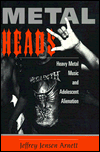(Audrey Ewell and Aaron Aites, 2008, 93 min, $16)
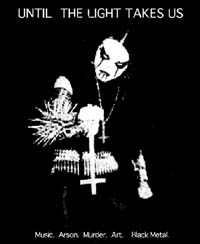 If we ask why instead of how an event happened, we find out what made the humans behind it do as they did. “Until the Light Takes Us” explores the why of early 1990s Norwegian black metal. Designed for people with no knowledge of that subculture, the film explains the black metal movement while making its actors emotionally accessible so we feel an urge to understand it. In a time of a sudden interest in metal documentaries, this film stands out by exploring the personalities and ideals that made people invent the music; other films look at the facts of how the music was invented but never the why. We don’t need another documentary telling us millions of people worldwide go crazy for heavy metal so it’s OK if we want to as well. We need to figure out what makes people pick this genre over every other. “Until the Light Takes Us” gets into the why of black metal and the church arsons, murder and media circus that followed. Through fragments of media footage, interviews, and footage of black metal musician Fenriz as he prepares to visit an art exhibit about black metal, this film explores the clash between fantasy and utilitarian modernity that sparked the radicalization of heavy metal. At its culmination, the documentary shows past colliding with present, and a fervent ideal of being against the modern world and believing in a mythic life full of fantasy, adventurous violence and conflict. It is both poignant and literal, like black metal a collision of alienated punk gumption and epic dreams. Like black metal, this film is a study of moods, overlapping in translucent layers, which as they are pulled away show us a simple shape of truth. Although some have bemoaned the inclusion of too much Varg or Fenriz, it became clear from other interviews that musicians are not an articulate bunch and the two who get the most screen time do so in part because they can explain themselves coherently. In the case of Varg, he’s easy to watch: he’s funny, sharp, friendly and his logic is lucid. Fenriz is moodier but his dark sense of absurdist humor commands the film. At the core of this genre, Ewell and Aites find a revolution against consumerism, equality, uniformity, utilitarianism and all other modern concepts by 35-year-old teenagers who never gave up on the idea that life should have adventure, constant discovery and a sense of meaning that unites the entire experience. Unlike most people, these individuals are fully aware of what death means, and when contrasted with the robotic plastic surroundings of the modern world, a parallax shift occurs: we go from seeing them as out of place to seeing their surroundings as out of place or perhaps, irrelevant. This film is a cipher, in that it gives us many entry points to a questioning of modern society and exploration of the ideas of black metal. Among other things, it is obsessed with the erasure of memory and culture, an inspection of the culture of convenience and the isolation it brings, and a hint that we should explore what Joseph Campbell calls “mythic imagination” and Varg calls “fantasy.” Without being socially critical, it is an exploration through the eyes of those who made black metal, and then saw it erased as it became a product with the passage of time.
If we ask why instead of how an event happened, we find out what made the humans behind it do as they did. “Until the Light Takes Us” explores the why of early 1990s Norwegian black metal. Designed for people with no knowledge of that subculture, the film explains the black metal movement while making its actors emotionally accessible so we feel an urge to understand it. In a time of a sudden interest in metal documentaries, this film stands out by exploring the personalities and ideals that made people invent the music; other films look at the facts of how the music was invented but never the why. We don’t need another documentary telling us millions of people worldwide go crazy for heavy metal so it’s OK if we want to as well. We need to figure out what makes people pick this genre over every other. “Until the Light Takes Us” gets into the why of black metal and the church arsons, murder and media circus that followed. Through fragments of media footage, interviews, and footage of black metal musician Fenriz as he prepares to visit an art exhibit about black metal, this film explores the clash between fantasy and utilitarian modernity that sparked the radicalization of heavy metal. At its culmination, the documentary shows past colliding with present, and a fervent ideal of being against the modern world and believing in a mythic life full of fantasy, adventurous violence and conflict. It is both poignant and literal, like black metal a collision of alienated punk gumption and epic dreams. Like black metal, this film is a study of moods, overlapping in translucent layers, which as they are pulled away show us a simple shape of truth. Although some have bemoaned the inclusion of too much Varg or Fenriz, it became clear from other interviews that musicians are not an articulate bunch and the two who get the most screen time do so in part because they can explain themselves coherently. In the case of Varg, he’s easy to watch: he’s funny, sharp, friendly and his logic is lucid. Fenriz is moodier but his dark sense of absurdist humor commands the film. At the core of this genre, Ewell and Aites find a revolution against consumerism, equality, uniformity, utilitarianism and all other modern concepts by 35-year-old teenagers who never gave up on the idea that life should have adventure, constant discovery and a sense of meaning that unites the entire experience. Unlike most people, these individuals are fully aware of what death means, and when contrasted with the robotic plastic surroundings of the modern world, a parallax shift occurs: we go from seeing them as out of place to seeing their surroundings as out of place or perhaps, irrelevant. This film is a cipher, in that it gives us many entry points to a questioning of modern society and exploration of the ideas of black metal. Among other things, it is obsessed with the erasure of memory and culture, an inspection of the culture of convenience and the isolation it brings, and a hint that we should explore what Joseph Campbell calls “mythic imagination” and Varg calls “fantasy.” Without being socially critical, it is an exploration through the eyes of those who made black metal, and then saw it erased as it became a product with the passage of time.
Metal has been crying out for a movie like this for decades. “Until the Light Takes Us” does what even metalheads cannot do most of the time: it takes the genre seriously as an art form, and peers behind the outlandish behavior and image to try to understand what motivates people to cast aside society for evil metal. For this alone this film should be praised, but it very quietly exposes metal like a blueprint, all while showing us the emotions of the people involved. It is compelling. Clearly these filmmakers knew how to ask the right questions and patiently wait for their subjects to articulate their points of view, then snatch the moments of greatest clarity and present them with impact. Scenes of industrial desolation follow the impact of strident words, and fires of ancient churches melt into shots of the memorabilia and essential moments of a developing genre. Each fan will probably have a wishlist for changing this film, but that only shows how much it seizes the imagination. I would enjoy seeing a comparison between black metal and the European Romantic literature, theatre and music of two centuries ago. Others have commented that less Frost (of Satyricon) might accelerate the latter half, but this reviewer was not troubled by either detail. While much of the material in the movie is well-known in the form that leaked out through the media, rediscovering it through this artfully told history is a dream come true. The documentarians hide themselves and let the characters tell their own side of it. What makes it a dream to which we’d like to return is that it explores the why of this music, and in doing so shows us the fans why we found so much hope and possibility in black metal.
2 Comments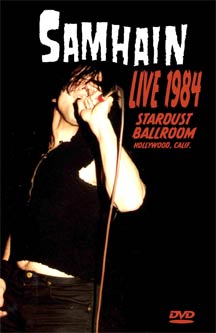 This hand-filmed, single-camera narrative documents a time when underground music was still struggling to find its path, and while the quality may not be that of a slick professional recording, the delivery of the band is captured in as much detail as is needed. The sound, when it is not cutting out, is good and separation between instruments and vocals can be heard clearly. Glenn Danzig is an energetic vocalist without either the jaded reserve or overindulgent showmanship of later years, and the crowd looks shellshocked and unsure of what they’re seeing, which has the advantage of them doing fewer stupid things to mar enjoyment of the performance. The band are economical with their onstage motions, and tight in their playing, which gives these songs the same power they have coming off of a CD. An enclosed sticker provokes some nostalgia for the time, an age of xeroxed posters and grimly absurd art, of people gathering in long-forgotten clubs to bash out violent performances. For those who like what Samhain were about, this DVD is everything that could be desired from this foundational band.
This hand-filmed, single-camera narrative documents a time when underground music was still struggling to find its path, and while the quality may not be that of a slick professional recording, the delivery of the band is captured in as much detail as is needed. The sound, when it is not cutting out, is good and separation between instruments and vocals can be heard clearly. Glenn Danzig is an energetic vocalist without either the jaded reserve or overindulgent showmanship of later years, and the crowd looks shellshocked and unsure of what they’re seeing, which has the advantage of them doing fewer stupid things to mar enjoyment of the performance. The band are economical with their onstage motions, and tight in their playing, which gives these songs the same power they have coming off of a CD. An enclosed sticker provokes some nostalgia for the time, an age of xeroxed posters and grimly absurd art, of people gathering in long-forgotten clubs to bash out violent performances. For those who like what Samhain were about, this DVD is everything that could be desired from this foundational band.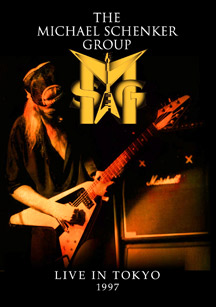 Despite the cheesy low-budget titles which preceded the actual performance, this video is quite competent. Video quality is high, color balance is good, and sound is as near to pristine as one can get through this medium. The problem is that it is filmed like a Bon Jovi live set, with too much focus on the vocalist and a total shortage of the crucial closeups of guitar playing that should accompany performances by people renowned for their instrumental ability. Is that rocket science, or what? We get plenty of wide-stage views and frontal closeup of “emotional” moments during the singing, but a fault of tight shots and creative angles. Tastefully the filmmakers avoid too much crowd interaction, which is smart since if one’s best qualification is having bought a ticket, it is probably not a sign that one has much to say/gesture of note. For this reviewer, the music on this DVD was too much of the hard rock variety, but it is clear that the performers are highly talented and it is hoped that with their next video release, there will be more focus on things of interest to musicians or people who simply admire classic guitar playing.
Despite the cheesy low-budget titles which preceded the actual performance, this video is quite competent. Video quality is high, color balance is good, and sound is as near to pristine as one can get through this medium. The problem is that it is filmed like a Bon Jovi live set, with too much focus on the vocalist and a total shortage of the crucial closeups of guitar playing that should accompany performances by people renowned for their instrumental ability. Is that rocket science, or what? We get plenty of wide-stage views and frontal closeup of “emotional” moments during the singing, but a fault of tight shots and creative angles. Tastefully the filmmakers avoid too much crowd interaction, which is smart since if one’s best qualification is having bought a ticket, it is probably not a sign that one has much to say/gesture of note. For this reviewer, the music on this DVD was too much of the hard rock variety, but it is clear that the performers are highly talented and it is hoped that with their next video release, there will be more focus on things of interest to musicians or people who simply admire classic guitar playing. For the first video review to ever grace these pages a film was chosen that is valuable for the conclusions gleaned from its perception, and not necessarily the art of moviemaking exhibited. Following the pattern of most first films, this work starts with a group of characters and mocks them in their ouroboric paths to nowhere. In doing so, it reveals something of the nature of the metal community itself, both through its dominant symbols – drugs, masturbation, anger, fatalism – and through its own fascination and the conclusion it is able to draw. Shot in conveniently sparse videocam, the movie romps through a series of goofy but enjoyable skits and long derangements of the senses synchronized in form to music, giving it the feeling of a music video + home video + low-budget film in one. Of note are musical choices, which showcase a DJ’s eye for context. There is ample T&A of a tame variety and gratifying indulgence in all forms of base humor, including masturbation, fecalism and amusing violence. Highlights include a series of blown-out female characters who are preachy but have the sexual ethics of a Grimoire Girl(tm), a fantastically fascist cop played by Craig Pillard, and several utterly believable stoner/metalhead characters who wander around in a haze of mostly their own creation. Absent is any moralism regarding the world around us; it is nice to escape that moralistic confine in which most contemporary filmic art is launched. Another highlight is “Ox,” who barges his way onto the set and provides one of the most believable character satires of pure rampaging destruction in human form yet found. Toward the beginning and end of the film, when it needs extra impetus, there is booster rocket material from what are now basic digital editing effects, which to the director’s credit are often quite cleverly applied (“making the most of what you have”). Is the movie “good”? No and yes. It’s hard to sit through some of this; the scenes are long and often tediously embarrassing to the degree that sympathy is lost for the characters and even the joke. As a whole, the plot is light, with three or four major devices and a linear narrative based on its precepts. It’s sometimes difficult to watch from a combination of ineptitude and padding. However, it is “good” in that this movie has a large amount of perceptive content for a cut-up laugh fest, and while its methods and often gags are cheap and sometimes predictable, they’re carried out with a unique flair and nurture for the humor involved. Like any modern comedy, the plot is a container for almost granularized skits woven roughly into the context of the people who drive changes in the action, and this approach works for the scattershot method required to address the diverse complexity of intellectual representation of external reality in this era. The acting isn’t great, but Zebub himself is a high-energy riot of comedic momentum who can be witty in a pinch, or subtly humorous over the length of a scene. His supporting cast perform well compared to many card-carrying actors and, while like in the movie itself we can see rough edges there are imperfections galore, they link up in the film like prisoner sex. While this movie gets a somewhat ambivalent recommendation, the idea of pursuing the next professional offering from Bill Zebub is not at all ambiguous to this reviewer.
For the first video review to ever grace these pages a film was chosen that is valuable for the conclusions gleaned from its perception, and not necessarily the art of moviemaking exhibited. Following the pattern of most first films, this work starts with a group of characters and mocks them in their ouroboric paths to nowhere. In doing so, it reveals something of the nature of the metal community itself, both through its dominant symbols – drugs, masturbation, anger, fatalism – and through its own fascination and the conclusion it is able to draw. Shot in conveniently sparse videocam, the movie romps through a series of goofy but enjoyable skits and long derangements of the senses synchronized in form to music, giving it the feeling of a music video + home video + low-budget film in one. Of note are musical choices, which showcase a DJ’s eye for context. There is ample T&A of a tame variety and gratifying indulgence in all forms of base humor, including masturbation, fecalism and amusing violence. Highlights include a series of blown-out female characters who are preachy but have the sexual ethics of a Grimoire Girl(tm), a fantastically fascist cop played by Craig Pillard, and several utterly believable stoner/metalhead characters who wander around in a haze of mostly their own creation. Absent is any moralism regarding the world around us; it is nice to escape that moralistic confine in which most contemporary filmic art is launched. Another highlight is “Ox,” who barges his way onto the set and provides one of the most believable character satires of pure rampaging destruction in human form yet found. Toward the beginning and end of the film, when it needs extra impetus, there is booster rocket material from what are now basic digital editing effects, which to the director’s credit are often quite cleverly applied (“making the most of what you have”). Is the movie “good”? No and yes. It’s hard to sit through some of this; the scenes are long and often tediously embarrassing to the degree that sympathy is lost for the characters and even the joke. As a whole, the plot is light, with three or four major devices and a linear narrative based on its precepts. It’s sometimes difficult to watch from a combination of ineptitude and padding. However, it is “good” in that this movie has a large amount of perceptive content for a cut-up laugh fest, and while its methods and often gags are cheap and sometimes predictable, they’re carried out with a unique flair and nurture for the humor involved. Like any modern comedy, the plot is a container for almost granularized skits woven roughly into the context of the people who drive changes in the action, and this approach works for the scattershot method required to address the diverse complexity of intellectual representation of external reality in this era. The acting isn’t great, but Zebub himself is a high-energy riot of comedic momentum who can be witty in a pinch, or subtly humorous over the length of a scene. His supporting cast perform well compared to many card-carrying actors and, while like in the movie itself we can see rough edges there are imperfections galore, they link up in the film like prisoner sex. While this movie gets a somewhat ambivalent recommendation, the idea of pursuing the next professional offering from Bill Zebub is not at all ambiguous to this reviewer.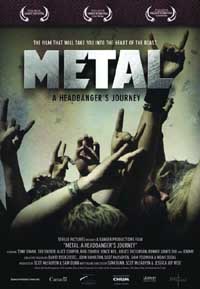 I just saw this at the Alamo Drafthouse, and I was surprised at how much I enjoyed it. It is probably the most watchable movie on the topic thus far, as it actually has a budget and properly addresses the many subgenres. It stays focused on the more populist bands (Wacken is a prominent setting) but I find that getting into all the underground minutiae bottoms out these days because whether people are motivated by commerce or popularity, the effect on the music is just as deletrious. Sam Dunn, the filmmaker, is a contemporary of the 1980s metal (30-ish, grew up on thrash and death metal, cites Autopsy as one of his favorite bands) so it is worth supporting and good fun. The interview with Gaahl and then Dio repeatedly ripping on Gene Simmons are worth the price of admission.
I just saw this at the Alamo Drafthouse, and I was surprised at how much I enjoyed it. It is probably the most watchable movie on the topic thus far, as it actually has a budget and properly addresses the many subgenres. It stays focused on the more populist bands (Wacken is a prominent setting) but I find that getting into all the underground minutiae bottoms out these days because whether people are motivated by commerce or popularity, the effect on the music is just as deletrious. Sam Dunn, the filmmaker, is a contemporary of the 1980s metal (30-ish, grew up on thrash and death metal, cites Autopsy as one of his favorite bands) so it is worth supporting and good fun. The interview with Gaahl and then Dio repeatedly ripping on Gene Simmons are worth the price of admission. What is excellent about this documentary is its bonehead simplicity in tracing the history of metal. It focuses on nodal points where single events touched off nascent convergences and caused paradigm shifts. Not all of these are musical events; much of the footage is devoted to showing how changes in history prompted changes in metal. This attitude allows it to peer into the motivation behind metal musicians more than any other documentary extant. The strength of this documentary is its star power in pulling in all of the classic figures in heavy metal for interviews. The big names show up, and get put at ease and asked questions by people whose journalistic intent matches a fascination with rock music as an event. When their answers are put in context, the result is metal history like a scrolling tapestry passing our eyes. The centerpiece of this documentary are the glam years of Hollywood bands from Van Halen to Guns and Roses, and much of it is intended to make them look more sophisticated and intense than their European counterparts who invented the genre. Speed metal gets an offhand mention, and underground metal gets entirely skipped. Its focus is not surprisingly on the kind of metal that makes it to the VH1 video channel and makes pots of money. In its coverage of glam rock, power ballads, bad boy rebels and drug abuse this film is most lucid. Humorously, the glam rockers, twenty years later, look somewhat diseased, while Tommy Lee still looks vile and combat-ready. Even funnier: of all the people interviewed, a remarkably self-confident and unpretentious Sebastian Bach is the most articulate and uncomplicated. Unfortunately, other parts of the film portray metalheads as wounded, out-of-control children who make this horrible, violent music because they’re defective. While these flaws weaken the documentary, and disable it more in post-viewing analysis when the viewer realizes the documentary’s weaknesses stem from a desire to productize one of the last un-zombie’d genres, “Heavy: The Story of Metal” has many positive factors, not least of all the simplest: the people who made it clearly enjoy metal music and wanted to portray it in a positive light, even if their definition of positive was twisted by their pocketbooks.
What is excellent about this documentary is its bonehead simplicity in tracing the history of metal. It focuses on nodal points where single events touched off nascent convergences and caused paradigm shifts. Not all of these are musical events; much of the footage is devoted to showing how changes in history prompted changes in metal. This attitude allows it to peer into the motivation behind metal musicians more than any other documentary extant. The strength of this documentary is its star power in pulling in all of the classic figures in heavy metal for interviews. The big names show up, and get put at ease and asked questions by people whose journalistic intent matches a fascination with rock music as an event. When their answers are put in context, the result is metal history like a scrolling tapestry passing our eyes. The centerpiece of this documentary are the glam years of Hollywood bands from Van Halen to Guns and Roses, and much of it is intended to make them look more sophisticated and intense than their European counterparts who invented the genre. Speed metal gets an offhand mention, and underground metal gets entirely skipped. Its focus is not surprisingly on the kind of metal that makes it to the VH1 video channel and makes pots of money. In its coverage of glam rock, power ballads, bad boy rebels and drug abuse this film is most lucid. Humorously, the glam rockers, twenty years later, look somewhat diseased, while Tommy Lee still looks vile and combat-ready. Even funnier: of all the people interviewed, a remarkably self-confident and unpretentious Sebastian Bach is the most articulate and uncomplicated. Unfortunately, other parts of the film portray metalheads as wounded, out-of-control children who make this horrible, violent music because they’re defective. While these flaws weaken the documentary, and disable it more in post-viewing analysis when the viewer realizes the documentary’s weaknesses stem from a desire to productize one of the last un-zombie’d genres, “Heavy: The Story of Metal” has many positive factors, not least of all the simplest: the people who made it clearly enjoy metal music and wanted to portray it in a positive light, even if their definition of positive was twisted by their pocketbooks.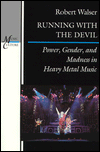 Aimed at the most popular examples of heavy metal, this analysis peers into issues of gender and power as ethnographic vectors of impetus toward participation in the metal genre. The interpretations of reasoning and ideologies behind music, while limited to less than self-articulate examples in many cases, are the strength of this book.
Aimed at the most popular examples of heavy metal, this analysis peers into issues of gender and power as ethnographic vectors of impetus toward participation in the metal genre. The interpretations of reasoning and ideologies behind music, while limited to less than self-articulate examples in many cases, are the strength of this book. A useful prescience about politics in dark themed bands can be derived from the lessons learned in this recounting of the rise and fall of the Doors and their enigmatic vocalist Jim Morrison. Densmore is under the grip of Catholic morality and while recognizing it is unable to vanquish it, but it colors the book less than his stunning first-person viewpoint on the action.
A useful prescience about politics in dark themed bands can be derived from the lessons learned in this recounting of the rise and fall of the Doors and their enigmatic vocalist Jim Morrison. Densmore is under the grip of Catholic morality and while recognizing it is unable to vanquish it, but it colors the book less than his stunning first-person viewpoint on the action.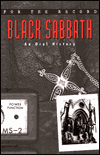 A reasonable account of the early days of metal and its slow descent out of the hippie and biker positive hedonism of the day into a new and darker persona. Extensive material on Sabbath personalities and attitudes regarding the creation and presentation of their music.
A reasonable account of the early days of metal and its slow descent out of the hippie and biker positive hedonism of the day into a new and darker persona. Extensive material on Sabbath personalities and attitudes regarding the creation and presentation of their music.